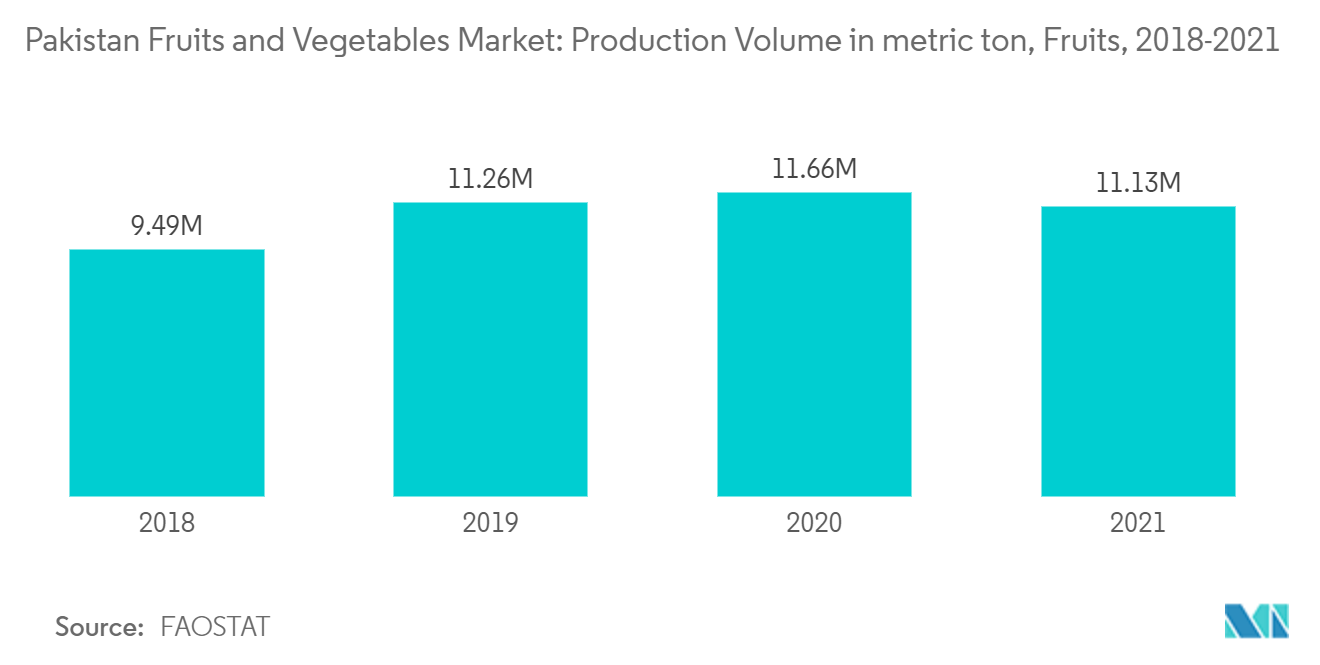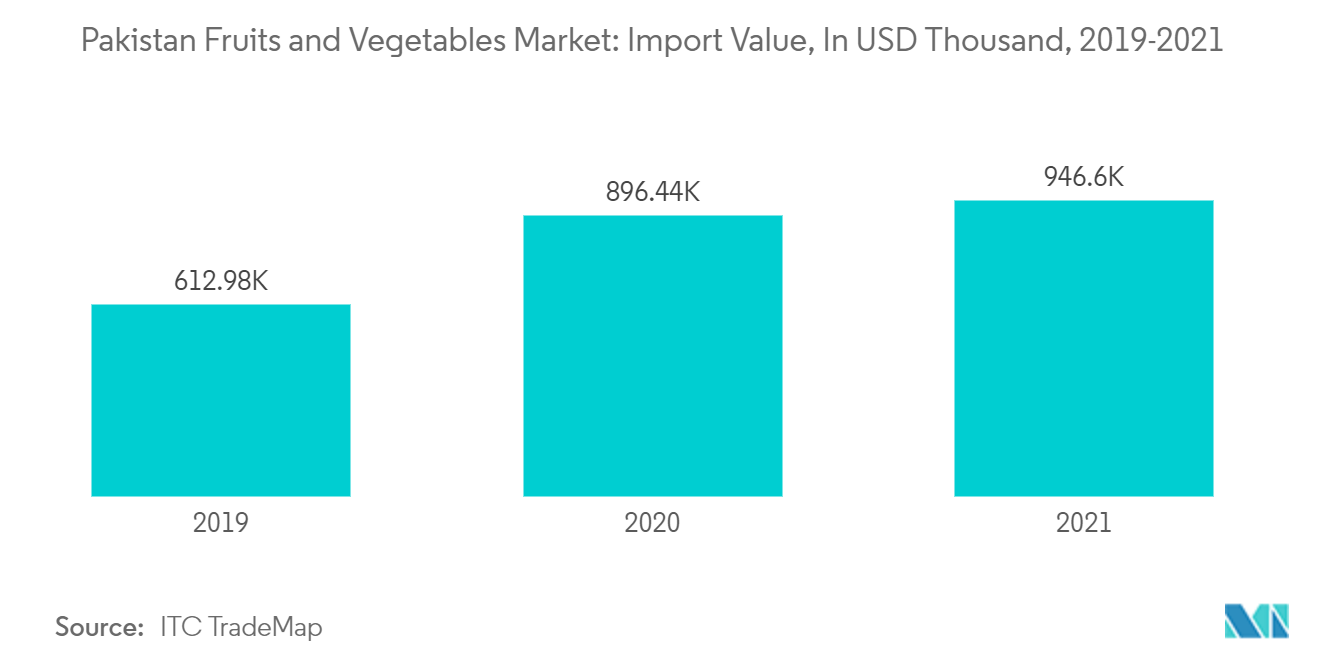Market Trends of Pakistan Fruits and Vegetables Industry
This section covers the major market trends shaping the Pakistan Fruits & Vegetables Market according to our research experts:
High Export Potential of Fruits
Fruits are considered one of the most important agricultural commodities in Pakistan due to their high export value. Pakistan is one of the leading producers of Citrus and Mangoes in the world due to favorable environmental conditions, and it is mostly produced in Sindh and Punjab regions in the country. Due to their high export potential, the government is implementing various projects and strategies to increase fruit production in the country. For example, the Government of Pakistan initiated the implementation of a new project "National Programme for Enhancing Command Area of Barani Areas of Pakistan". The project started in the year 2021, and it aims to bring over 18,000 ha under fruit crops in five years. Furthermore, the government formulated strategies, such as 'Pakistan Fruits and Vegetables Export Strategy 2023-2027 as part of the National Priority Sectors Export Strategy (NPSES) Initiative, to increase the horticulture exports of the country in the next five years. According to the Food and Agriculture Organization Statistics (FAOSTAT), the total fruit production in Pakistan increased from 9.48 million metric ton to 11.13 million metric ton during the period 2018-2021. Owing to the increased fruit production in the country, fruit exports of the country are gradually increased over the past few years. According to the ITC Trade Map, the fruit exports of the country recorded a growth of 17.7% in 2021 reaching USD 492 million. Citrus and Mangoes are the most exported fruits in the country accounting for over 60% of the total fruit exports of Pakistan. Thus, the high export potential of fruits supported by various government initiatives and increased domestic production is anticipated to drive the fruits and vegetables market in Pakistan in coming years.

Increasing demand for Vegetables
Owing to low domestic production, Pakistan depends on vegetable imports for meeting the domestic demand. According to the International Trade Center, vegetable imports dominate the Pakistani market compared to fruit imports. The value of vegetable imports in the country increased by about 50% during the period 2018-2021. The country imported vegetables worth more than USD 946 million in the year 2021 with Australia, Afghanistan, Russia, and Canada being the major exporters of vegetables to Pakistan. Vegetables like potatoes, tomatoes, onions, shallots, garlic, leeks, cabbage, cauliflower, kohlrabi, kale, lettuce, chicory, carrots, turnips, cucumbers, gherkins, and coconuts are majorly imported in Pakistan. Furthermore, recent floods in the country are expected to further increase vegetable imports in the following years. According to a report published by ICIMOD (International Centre for Integrated Mountain Development), Sindh province is the most affected area in the country, where the vegetable losses are estimated at USD 374 million affecting the three key vegetable crops Onions, Tomato, and Chilli. The growing domestic demand for vegetables in addition to the low domestic production is anticipated to drive vegetable imports driving the studied market.


